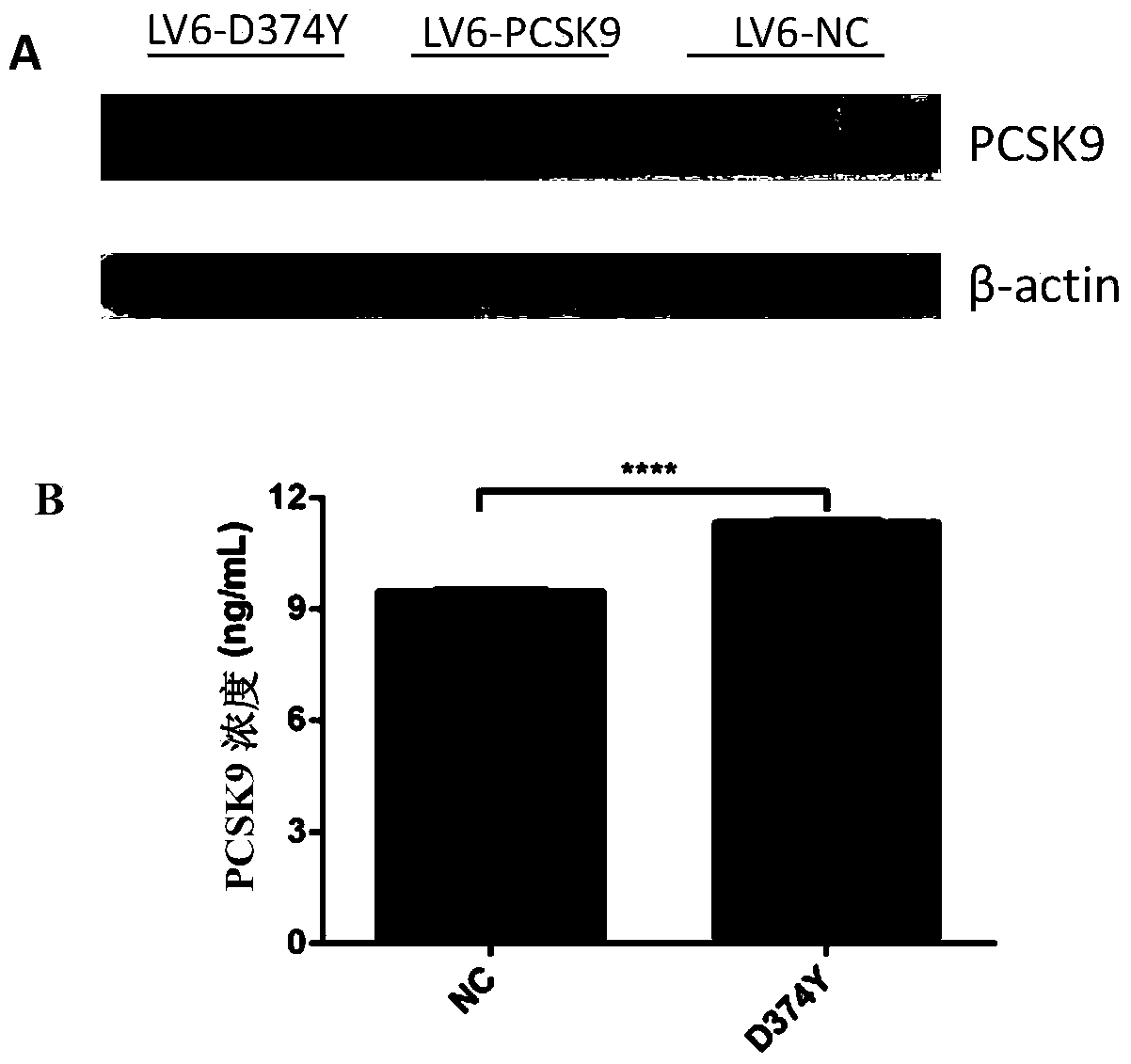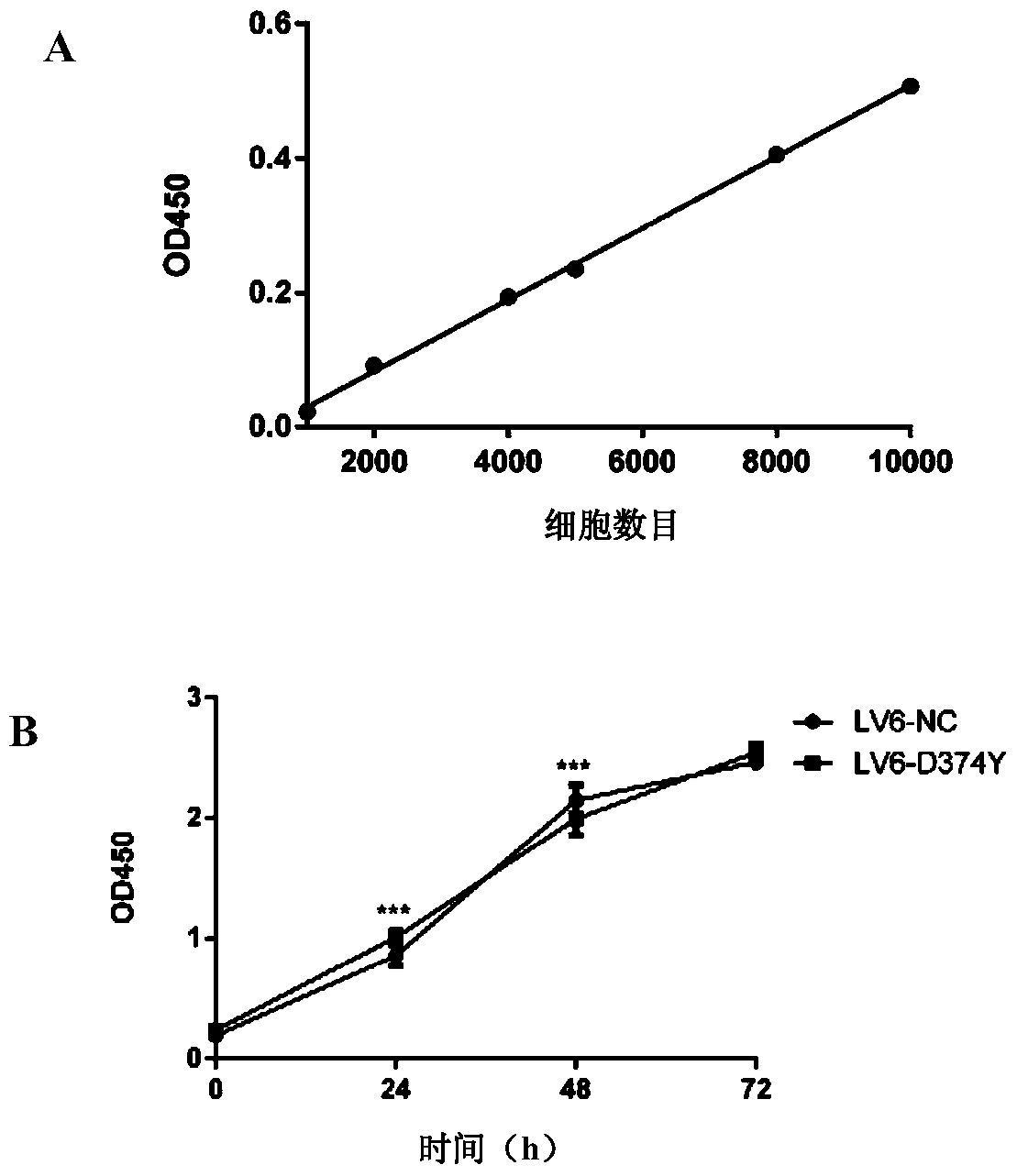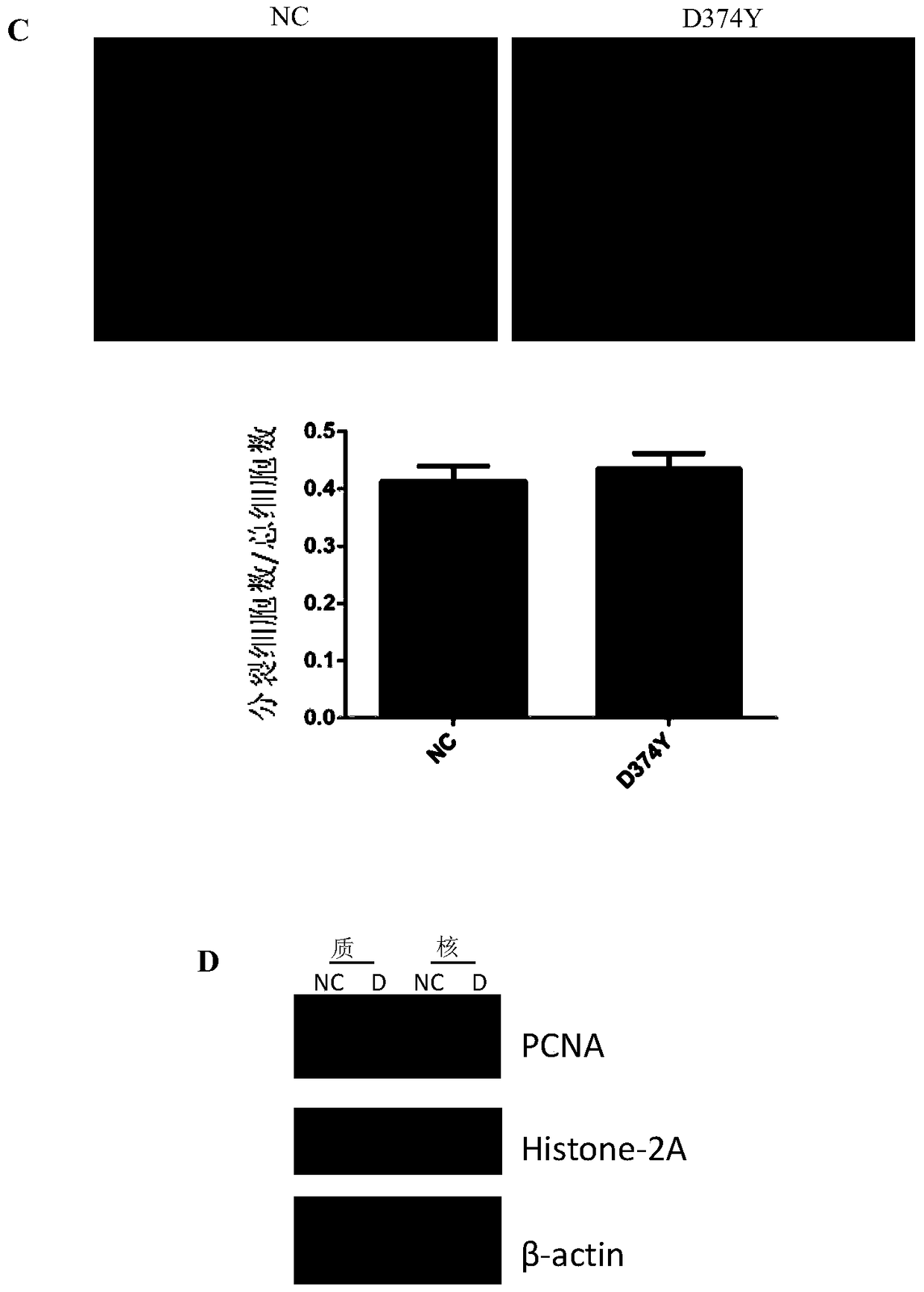The application of the d374y mutant of pcsk9 protein in inhibiting the migration of liver cancer cells
A technology for inhibiting liver cancer and cell migration, which can be applied in the biological field and can solve problems such as the impact of PCSK9 on the migration of liver cancer cells that has not been seen
- Summary
- Abstract
- Description
- Claims
- Application Information
AI Technical Summary
Problems solved by technology
Method used
Image
Examples
Embodiment 1
[0054] Embodiment 1, the construction of human PCSK9 gene wild type, D374Y mutant overexpression vector
[0055] The present invention relates to human PCSK9 gene wild type (Genebank: NM_174936, 2079bp) and D374Y mutant sequence (G at 1120bp is mutated to T, and the aspartic acid codon GAC is mutated to tyrosine codon TAC). The nucleotide sequence of the wild-type PCSK9 gene is specifically shown in sequence 4 in the sequence listing, encoding the wild-type PCSK9 protein shown in sequence 3 in the sequence listing. The nucleotide sequence of the D374Y mutant sequence of the PCSK9 gene is specifically shown in sequence 2 in the sequence listing, which encodes the D374Y mutant of the PCSK9 protein shown in sequence 1 in the sequence listing.
[0056] In this example, the wild type PCSK9 gene (sequence 4) and the D374Y mutant sequence (sequence 2) of the PCSK9 gene were respectively inserted between the multiple cloning sites NotI and NsiI of the lentiviral vector LV6 to construc...
Embodiment 2
[0058] Example 2, Normal translation and secretion of human PCSK9 gene overexpression vector in HepG2 cells
[0059] In order to verify the working efficiency of the PCSK9 gene overexpression vector, the recombinant expression vectors LV6-PCSK9 and LV6-D374Y constructed in Example 1 were respectively transfected into HepG2 cells, and positive cell pools with puromycin resistance were obtained by screening.
[0060] 1. Western blot was used to detect the expression of PCSK9 protein in cells
[0061] The specific detection method is as follows:
[0062] 1) Extract total protein from HepG2 cells transfected with recombinant expression vectors LV6-PCSK9 and LV6-D374Y respectively, and perform protein quantification. 10 μg of each protein was heat-denatured at 95°C for 5 min in loading buffer (CST), separated by 10% SDS-PAGE electrophoresis, and then transferred to NC membrane (Millipore).
[0063] 2) After the membrane transfer is completed, wash with 20 mL TBS on a decolorizing...
Embodiment 3
[0077] Example 3, the overexpression of the D374Y mutant of the human PCSK9 gene does not affect the proliferation of HepG2 cells
[0078] The unregulated overexpression of genes may affect the normal proliferation ability of cells, and the high expression of PCSK9 D374Y mutant may have potential effects on the proliferation of HepG2 cells. In order to verify this hypothesis, the inventor of the present invention has carried out following experiment:
[0079] 1. CCK8 method was used to detect the proliferation ability of cells
[0080] The present invention uses CCK8 and immunofluorescence methods to detect the proliferation ability of PCSK9 overexpression cells (LV6-D374Y group in Example 2) and blank control cells (LV6-NC group in Example 2). Among them, the CCK8 experiment was performed according to the instructions of the CCK8 cell proliferation detection kit of Dongren Chemical Technology (Shanghai) Co., Ltd. The specific operation is as follows:
[0081]Firstly, the s...
PUM
 Login to View More
Login to View More Abstract
Description
Claims
Application Information
 Login to View More
Login to View More - Generate Ideas
- Intellectual Property
- Life Sciences
- Materials
- Tech Scout
- Unparalleled Data Quality
- Higher Quality Content
- 60% Fewer Hallucinations
Browse by: Latest US Patents, China's latest patents, Technical Efficacy Thesaurus, Application Domain, Technology Topic, Popular Technical Reports.
© 2025 PatSnap. All rights reserved.Legal|Privacy policy|Modern Slavery Act Transparency Statement|Sitemap|About US| Contact US: help@patsnap.com



